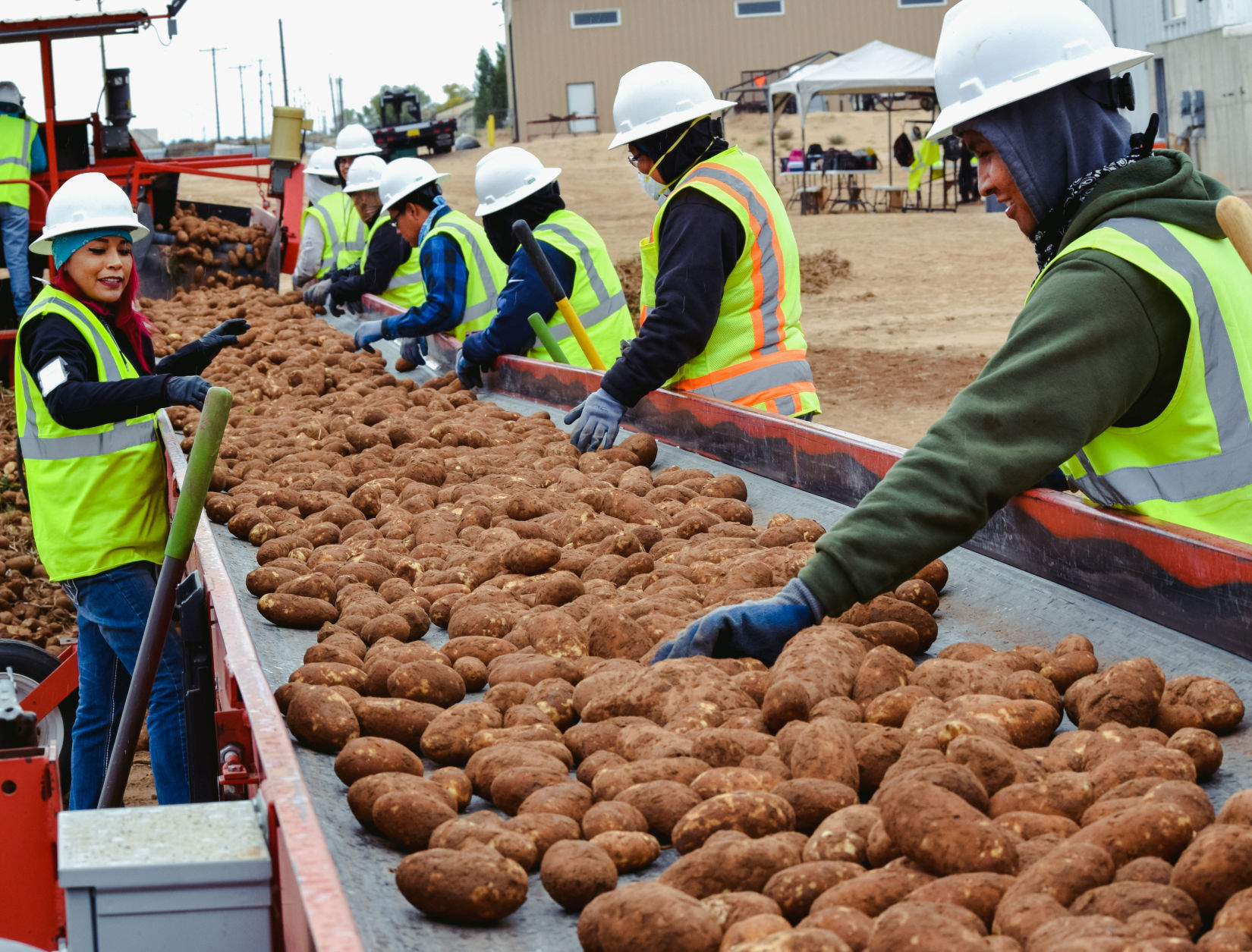Approximately 5,000 semi-truck loads of potatoes leave the Four Corners region every year. The spuds are headed to dinner tables via retail stores and snack processors.
The dinner potatoes are grown by Navajo Agriculture Products Industry, while those headed to potato chip processing are grown by Navajo Mesa Farms, an independent contractor renting NAPI farm land.
Located in the middle of the potato fields is New Mexico State University’s Agricultural Science Center at Farmington, which is conducting variety trials to help the two producers improve their crop quality and yield.
Potatoes produce more revenue per acre than any other crop that can be produced in the Four Corners region.
NMSU is one of 12 land-grant university research farms in the United States conducting potato variety trials in cooperation with Potatoes USA, a grower’s group.
Potatoes USA is an industry-funded marketing organization that promotes five main potato products: fresh table-stock potatoes, fresh chipping potatoes, seed potatoes, frozen potato products and dehydrated potato products.
“Producers pay 3 cents a hundred-weight to Potatoes USA to provide services that help customers around the world increase demand for potatoes,” said Charles Higgins, president of Higgins Farms Inc. and consultant through Potatoes USA. “The organization invests in marketing and product management research to help grow the potato business.”
NMSU has benefited from the organization’s investment in research through grant funds for equipment specific for potato research.
“This year variety trials of 33 table cultivars and 22 chip cultivars were conducted at the Farmington research center fields,” Higgins said. “We are looking for chip varieties that have better chemical stability from storage for potato chips, and varieties that have better appearance for supermarkets.”
Since NMSU established the research farm 50 years ago on the mesa south of Farmington, variety trials of an array of crops have been done to help NAPI and Four Corners region agricultural producers be more profitable.
“We are combining research and practical experience to obtain the best results,” said Aaron Benally, NAPI organic/conventional crop director. “The variety trials at NMSU help us to not waste time and money on crops that will not produce well in our environment and climate.”
As consumer trends shift toward organic produce, NAPI has expanded its farming practice to include organic potatoes.
“Because of regulations regarding what chemicals can be used on organic fields, we are transitioning a portion of our farm in order to help NAPI determine which organic crops they might want to grow by looking at pest control methods that are best for their operation,” said Kevin Lombard, superintendent of NMSU’s Farmington facility.
NMSU has conducted extensive research on evapotranspiration at the Farmington facility. That water research has determined consumptive use indexes and efficient water application strategies on crops grown in the area. This information has helped NAPI and other agriculture producers to be better stewards of water in the semi-arid region.
Water application research includes determining water-use production function of the crop. This project includes developing and evaluating formulae to predict water application and consumptive use of the crop.
NMSU assistant professor Koffi Djaman, whose professional field of expertise includes soil and water resources, irrigation engineering and crop response to irrigation, has extended the water research into the potato fields where he is measuring soil moisture with soil probes that transmit data to office computers and cell phones.
Sensors in the probe at four-inch intervals measure the soil moisture content at different depths.
“With this system we can tell when we need to water and how much irrigation water is needed,” Djaman said. “After a rain, we can determine how deep that moisture has gone and add the amount needed to meet crop evapotranspiration efficiently.”
The partnership between NMSU, NAPI and Potatoes USA is helping the region contribute one percent of all potatoes produced in the United States.



